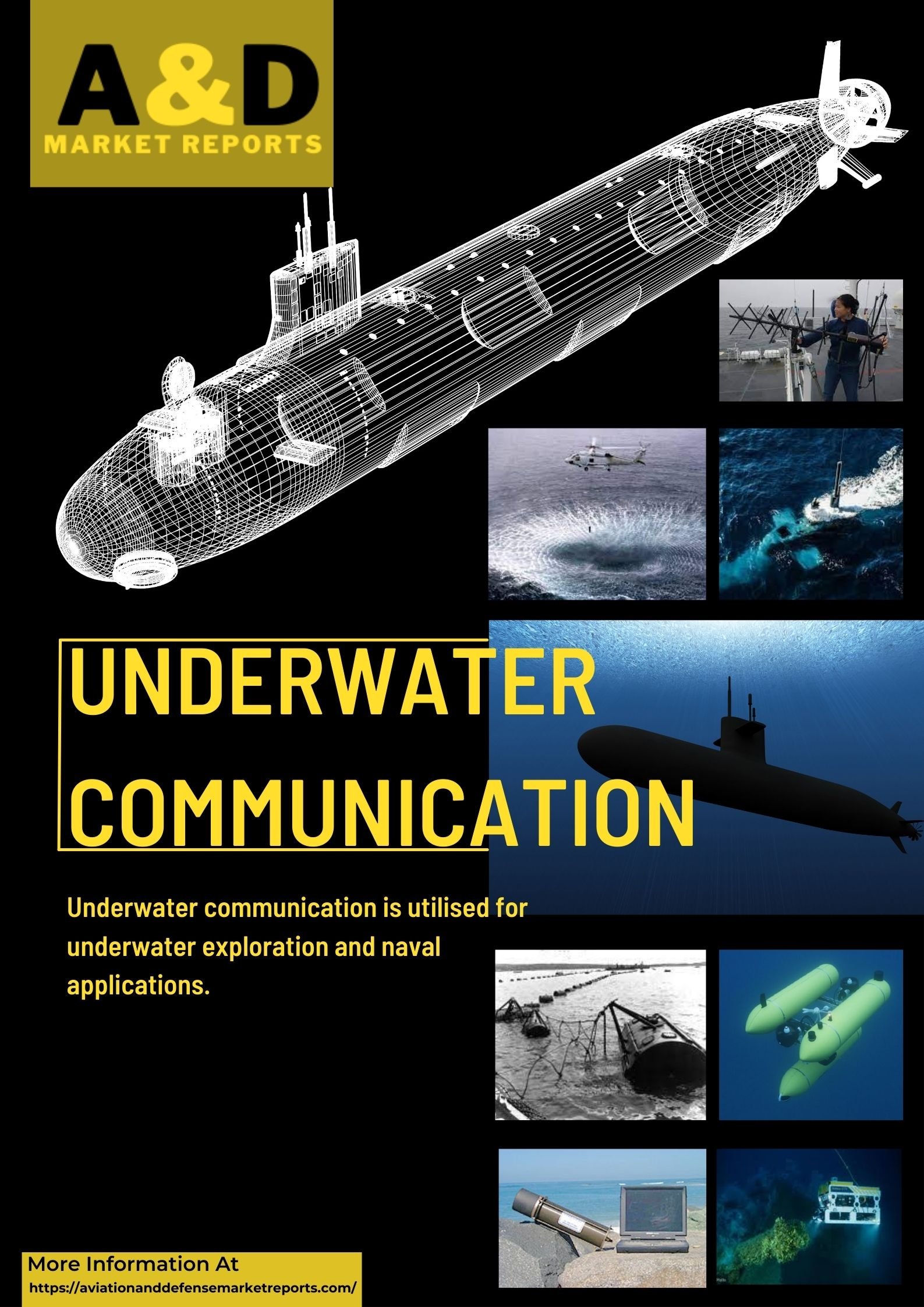Radio frequencies enabled commination between various terrestrial platforms and revolutionised commination systems. Radio frequencies with higher bandwidth and low latency enables real-time information transfer between various terrestrial platforms and assets. The saline nature of sea water hinders radio communication and hence submarine are other underwater platforms are cut off from traditional radio communication and robust underwater communication systems are needed.
Underwater communication is utilised for underwater exploration and naval applications. Subsea IoUT ecosystem has evolved over the years, naval platforms such as AUVs (Autonomous Underwater Vehicle) and ROUV (Remotely Operated Underwater Vehicle). Both these platforms along with surface vessels need data transfer systems that are self-healing and have high bandwidth. The broadband must have low latency to enable real time data accessibility. The current acoustic communication system uses modems that can be easily integrated on to UAVs and ROVs.
VLF (Very Low Frequency) and Extremely Low Frequency (ELF) is used to communicate with submarines. Submarines also use blue lasers for low latency communication application. Some of the primary limitations of underwater acoustic communication is low bandwidth and signal attenuation in long range communication. VLF radio waves can penetrate sea water up to a depth of 20meters. Submarines loitering at lower depth use a tethered float with antenna that reaches closer to the surface to receive VLF signals, this manoeuvre also increases the risk of detection by anti-submarines integrated with dipping sonars. VLF broadcast is a one way broadcast since VLF broadcast stations need a large antenna and there large antennas are impossible to fit on a submarine. VLFs low bandwidth does not support voice communication and can only transmit text messages.
ELF can penetrate sea water to a much deeper depths when compared to the VLF. This enables signals to be sent to submarines that are operating at safer depths. However building ELF transmitters is a herculean task. The ELF transmitters work at very long wavelengths. ELF transmitters are also power hungry requiring high electricity production capacity up to 2 MW. This high power utilisation of ELF also raised environmental concerns, human at close proximity to ELF stations experience headache and other symptoms that are believed to be caused by ELF transmitters. These ELF radio waves can cause cell damage and hence have raised health and safety concerns.
SSIXS (Submarine Satellite Information Exchange Sub System) is used to communicate with submarines, this UHF satcom system uses ultra-high frequency and is used by the US Navy to communicate with submarines. This UHF satcom system ensure robust communication that can reach any location across the world and also ensures operational effectiveness and sustenance of submarine warfare. Nations have started integrating UHF satcom communication systems on their existing submarine fleet. This communication system also enables the submarine to receive data such as video, image and also internet connectivity.
High speed low powered laser based data communication is considered to be the next gen alternative to the existing acoustic communication system terminals. US Navy is looking to integrate UUV (Underwater Unmanned Vehicles) submarine hunters in order to counter to counter Chinese submarines. These UUVs are expected to have long loitering capability and narrow beam laser communication system to communicate with surface ships or costal assets that are part of the Naval Sea Systems Command. This narrow beam laser communication is expected to provide stable communication link between multiple UUV. Narrow band laser communication also helps in exploration and mapping supplication, UUVs will be able to transmit real time data high bandwidth data to the surface assets. Laser communication will also form the backbone of ToUT. Deep sea infrastructures such as oil rig platforms as well as defense assets. Narrowband laser communication characteristics includes high bandwidth at long ranges, gigabit bandwidth communication, low power consumption and unaffected by acoustic noise. Real time monitoring of wide band data enables monitoring of the ocean bed for seismic activity and could prove to be a life saver in case of underwater earthquake that can trigger Tsunamis.
Integrated lasercom systems with blue-green optoelectronic technologies, including advances such as gallium nitride laser arrays and silicon Geiger-mode avalanche photodiode array technologies, could ensure lower size, weight, and power systems with enhanced communication functionality. Lasercom in future will form the backbone of both civilian as well as defense communication systems. The growing need for UUVs will also drive the wireless underwater communication market in the coming years. Technological advancements in the field of photonics and electronics will enable lasercom systems to be robust and highly efficient with the ability to support higher bandwidth that the existing systems.

1 Comment
See the comment